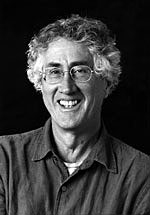March 3, 2009 - By Krista Conger

Gerald Crabtree
Scientists at the medical school have identified a protein complex important in controlling whether embryonic stem cells retain their ability to become any cell in the body - a quality called pluripotency - or instead embark on a pathway of maturation and specialization. The finding is an important advance in the quest to harness the unique abilities of embryonic stem cells to treat disease and generate replacement tissue for the body.
Like a musician tuning an instrument, the complex associates with and adjusts the expression levels of other proteins important in pluripotency, perhaps by affecting how the DNA is packaged within the cells in strands called chromatin. They found that this complex associates closely with other major regulators of pluripotency, including four genes known to be able to coax adult cells to display many qualities of embryonic stem cells.
'We've identified a specific mechanism to maintain pluripotency that involves large-scale, genome-wide chromatin remodeling,' said Gerald Crabtree, MD. 'The results are rather spectacular. They show clearly that the complex binds to and works in near-perfect concert with these four famous pluripotent factors. They are part of the same developmental program.'
Crabtree is a professor of pathology and of developmental biology at the medical school, as well as a Howard Hughes Medical Investigator and a member of Stanford's Cancer Center. He is the senior author of two articles describing the work, which were published online March 2 in the Proceedings of the National Academy of Sciences. The first author of both papers, Lena Ho, is a graduate student in Crabtree's lab.
Ho began her investigation into the function of the complex, called BAF, after other researchers had found that it was important in regulating how a cell's genetic material is wrapped around DNA packaging proteins called histones. One way of controlling how and when a gene is made into a protein involves increasing or restricting its accessibility to other proteins called transcription factors, and BAF is one of many so-called chromatin remodeling complexes that regulate this process in mammals. However, Ho found that the protein components of BAF vary according to the cell type in which they are found.
'We realized, 'Gee, there's something different between how this complex works in skin cells like fibroblasts and embryonic stem cells,'' said Crabtree. They began to look more closely at how BAF functions in embryonic stem cells.
The work also builds upon previous findings of Shinya Yamanaka, MD, PhD, of UC-San Francisco. The world of stem cell research was galvanized in 2007 with the discovery by Yamanaka of the four genes that can affect adult cells in such a way that they display many qualities of embryonic stem cells. That opened the door to the possibility of realizing the promise of embryonic stem cells without requiring the destruction of embryos. The technique of using these genes to create what are known as induced pluripotent stem, or iPS, cells is an active area of stem cell research.
It's not yet known exactly how embryonic-stem-cell BAF, or esBAF, works, though the researchers suspect it may have something to do with its ability to remodel chromatin around other genes involved in pluripotency. However, they did discover that esBAF can both activate and inactivate the expression of these genes. It's possible that this refining, or focusing, role is needed to keep embryonic stem cells walking the line between self-renewal and differentiation.
The researchers are now investigating whether they can manipulate the subunits of the BAF complex in such a way to make fibroblasts pluripotent. They're also curious as to whether small molecules or chemicals modulate the complex's function. If so, it may be one step toward more efficient regenerative medicine, according to Crabtree.
Additional Stanford collaborators on the research include Jehnna Ronan; Jiang Wu, PhD; Brett Staahl; Lei Chen, MD; Ann Kuo; and Julie Lessard, PhD. The work was done in collaboration with the group of Keji Zhao, PhD, at the National Institutes of Health.
The work was funded by the Howard Hughes Medical Institute; the NIH; the National Heart, Lung, and Blood Institute; and the Agency of Science, Technology and Research of Singapore.
About Stanford Medicine
Stanford Medicine is an integrated academic health system comprising the Stanford School of Medicine and adult and pediatric health care delivery systems. Together, they harness the full potential of biomedicine through collaborative research, education and clinical care for patients. For more information, please visit med.stanford.edu.